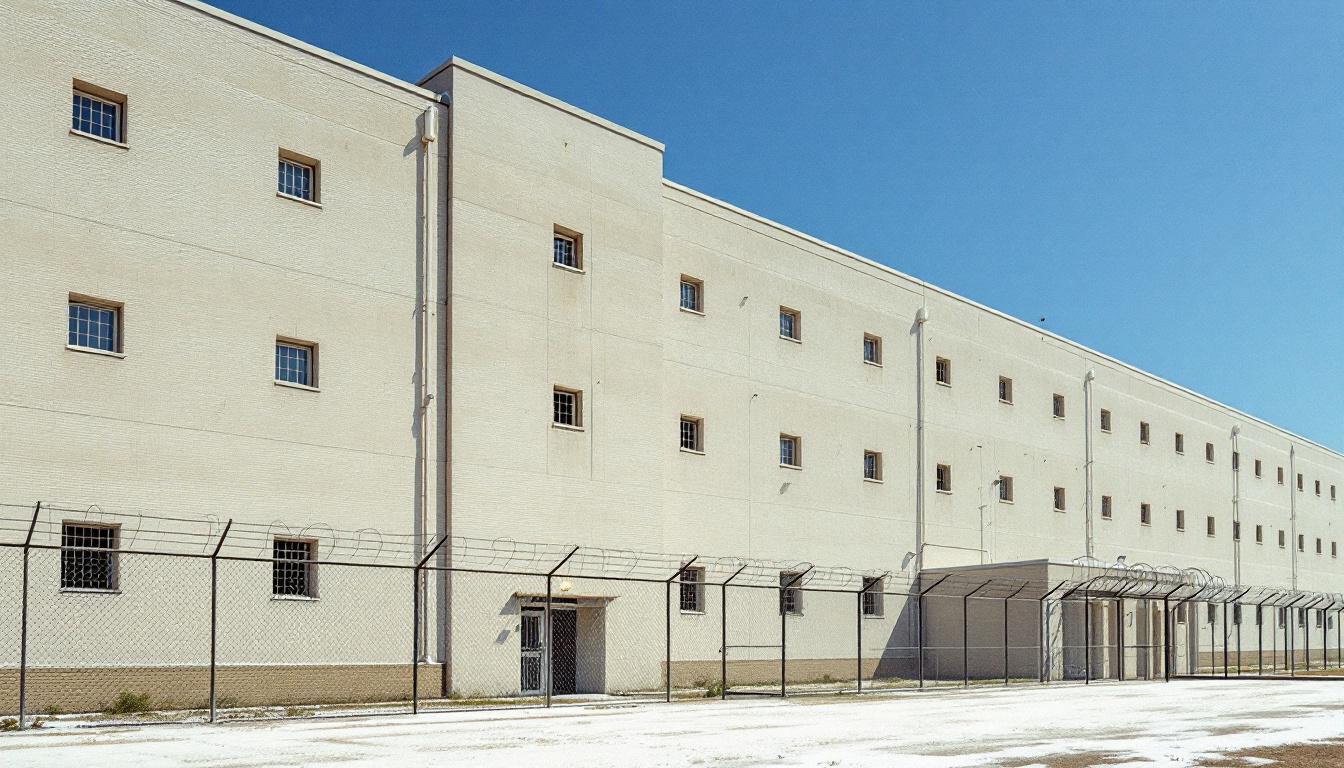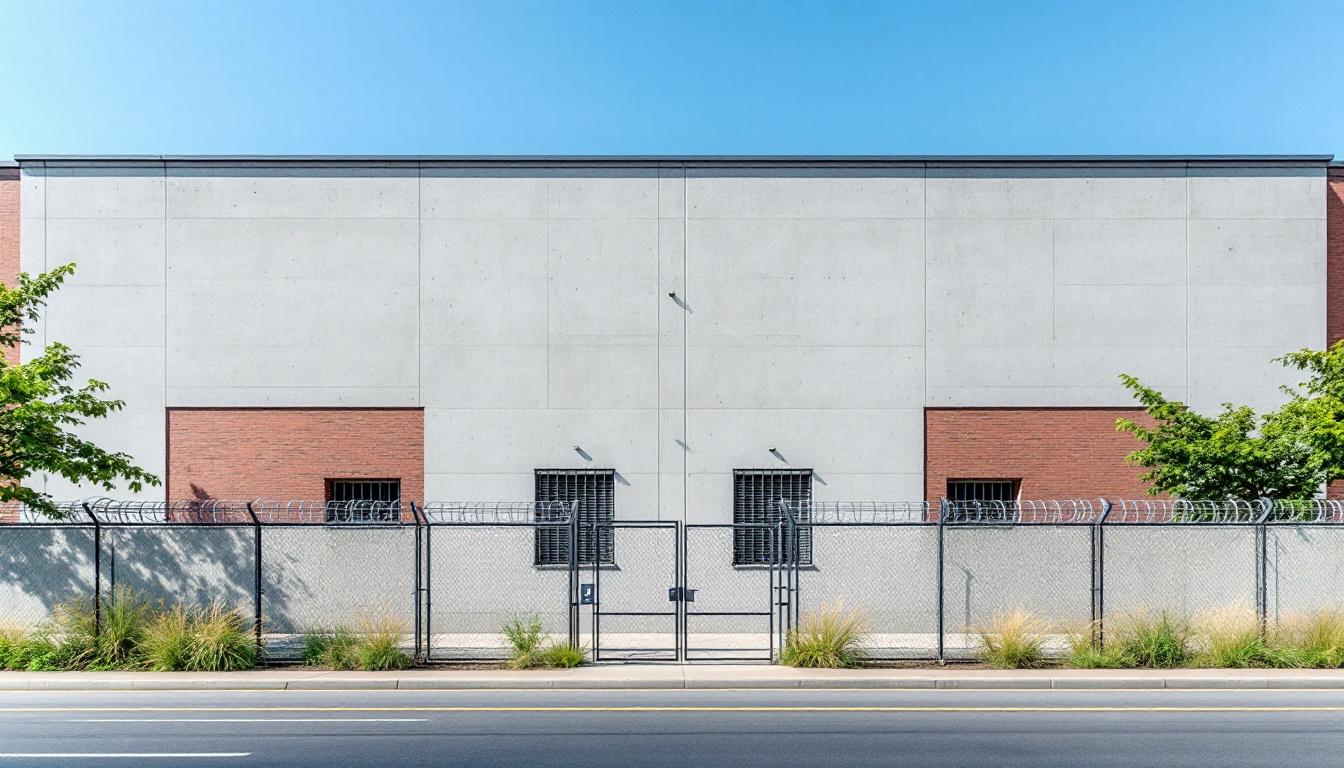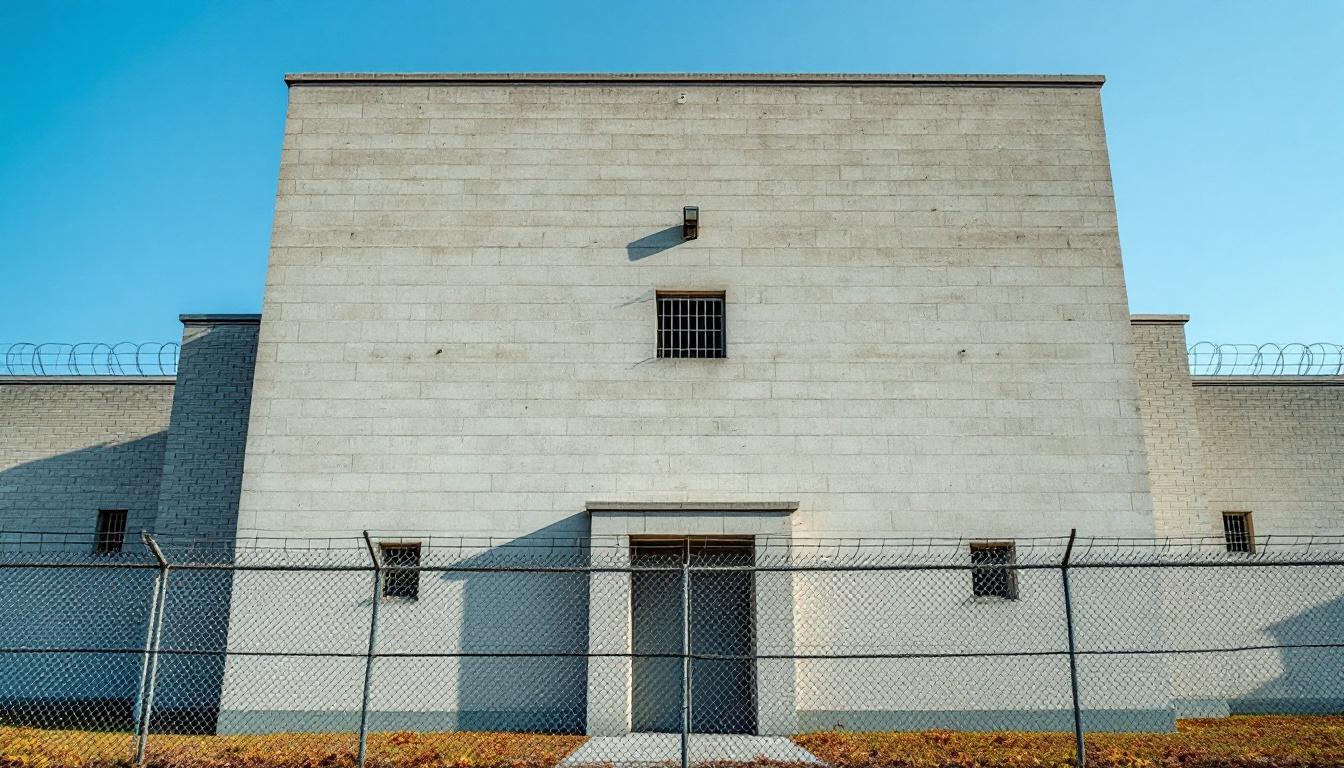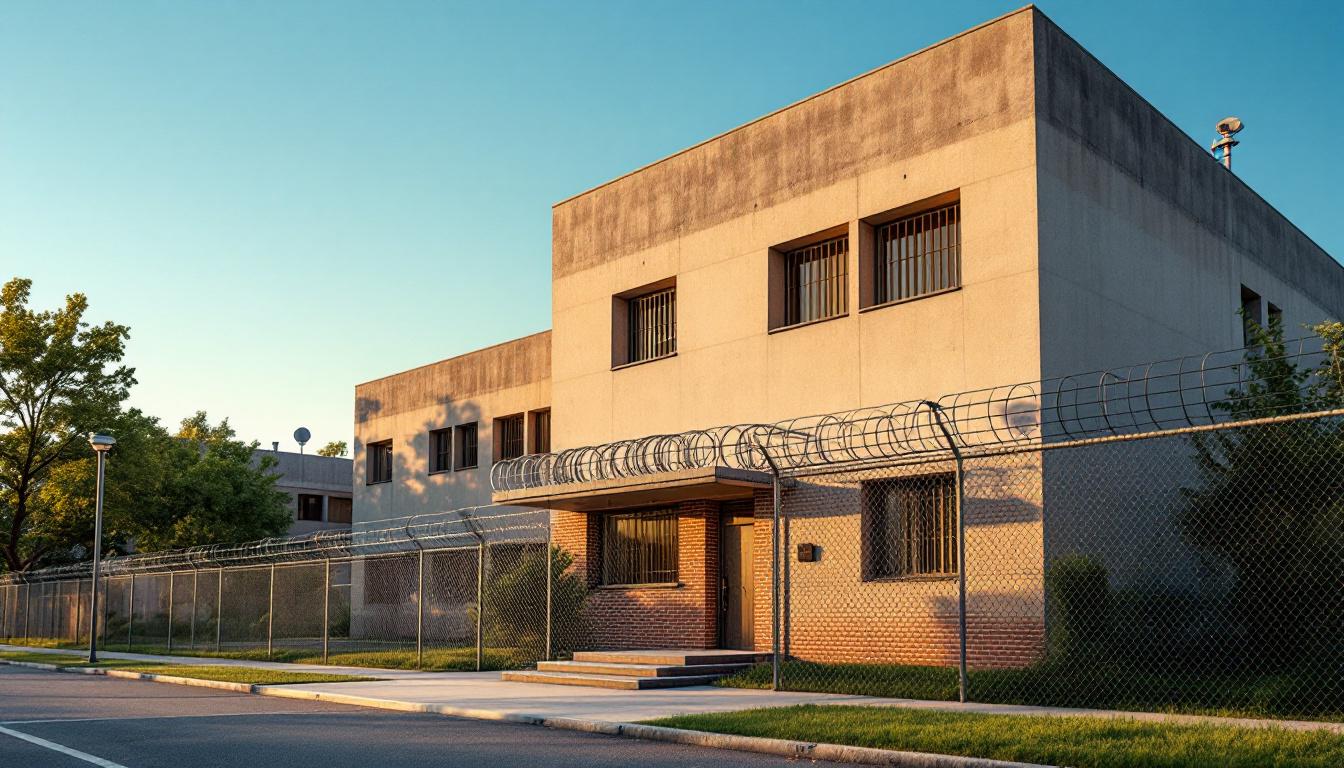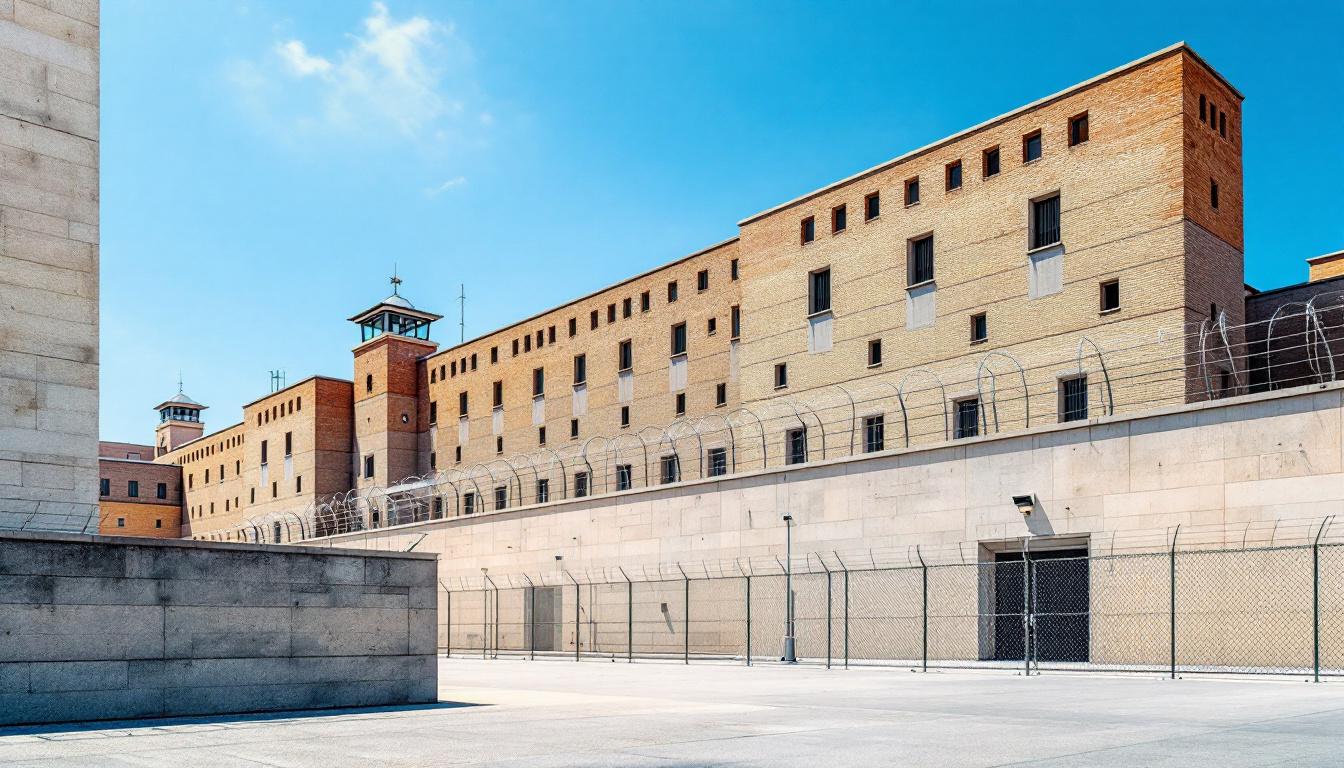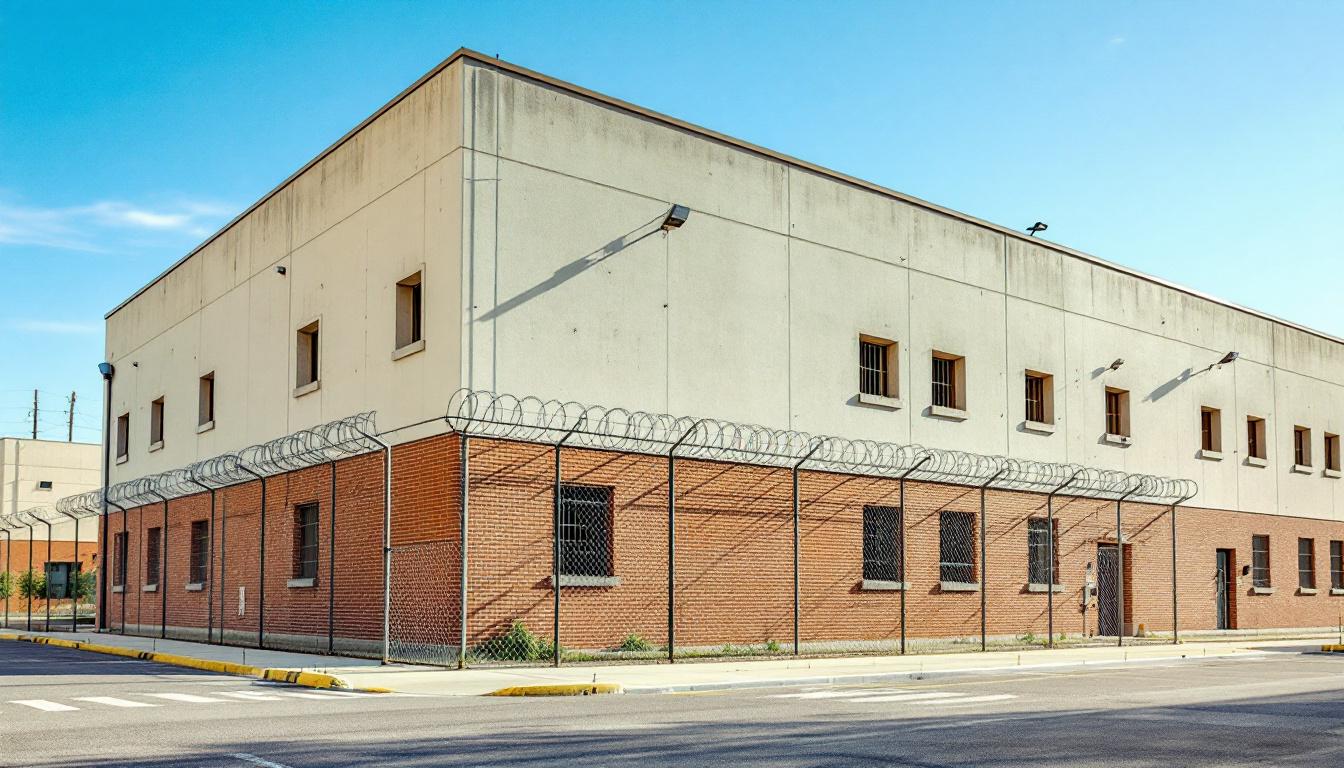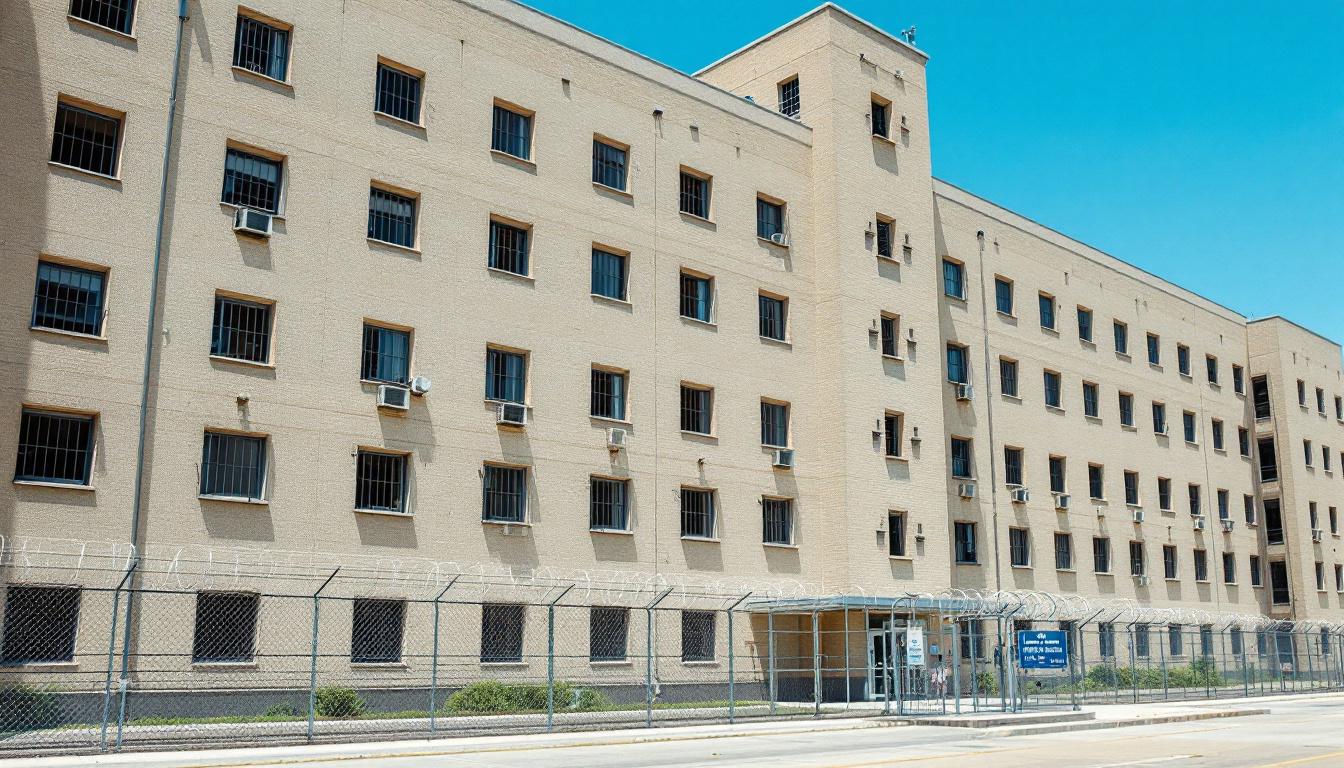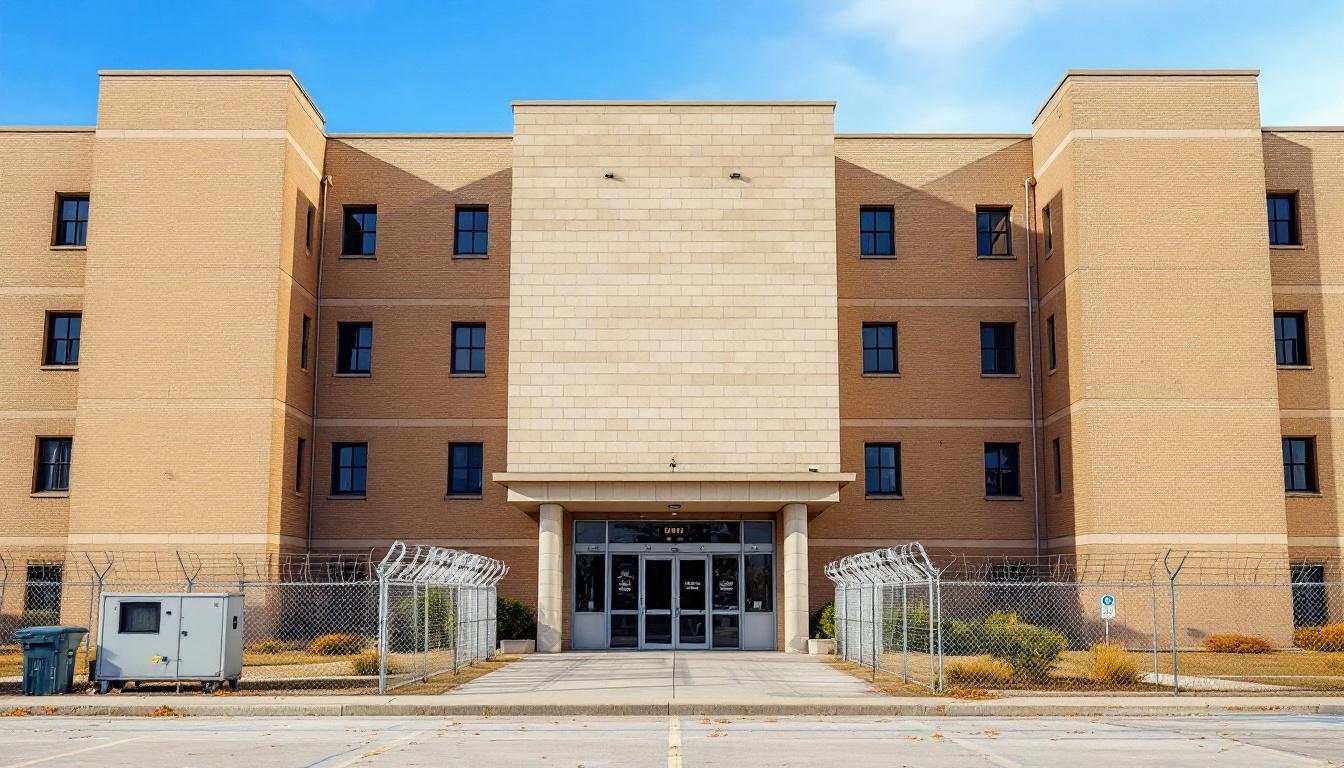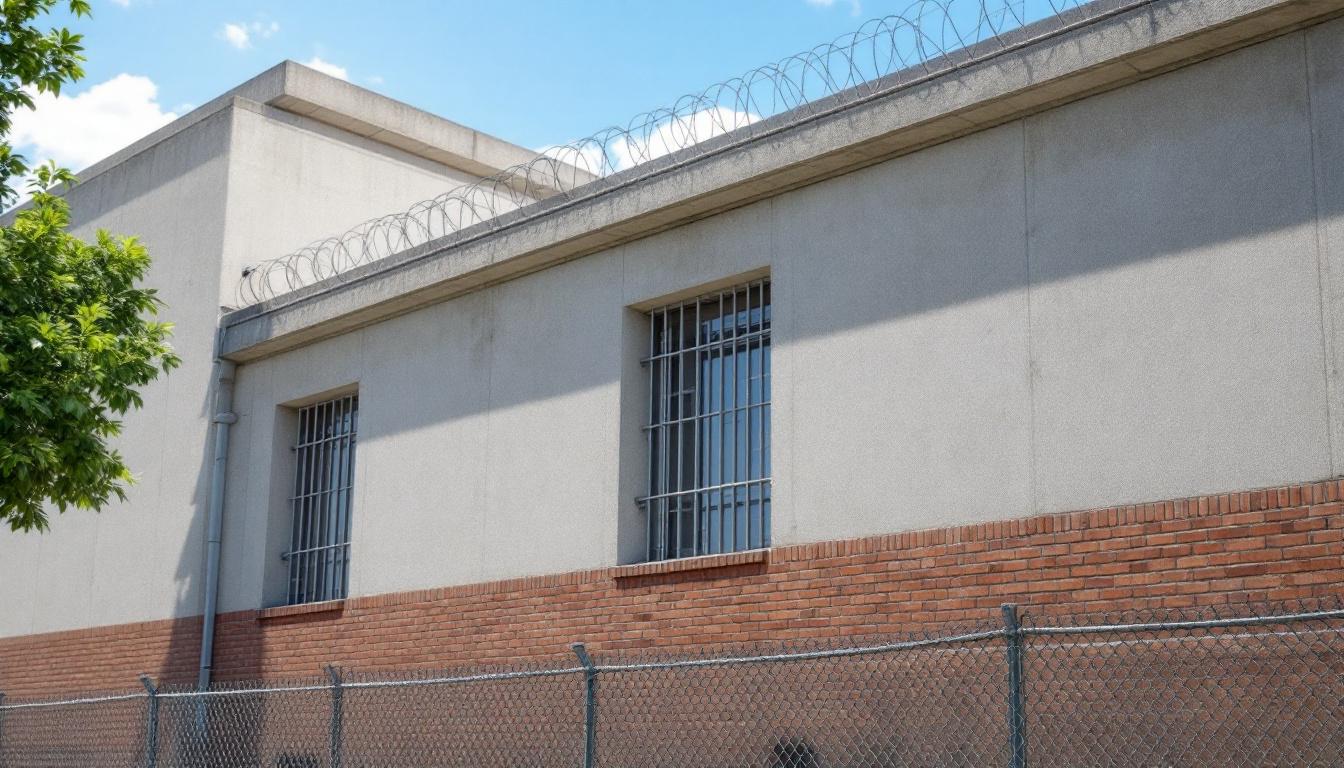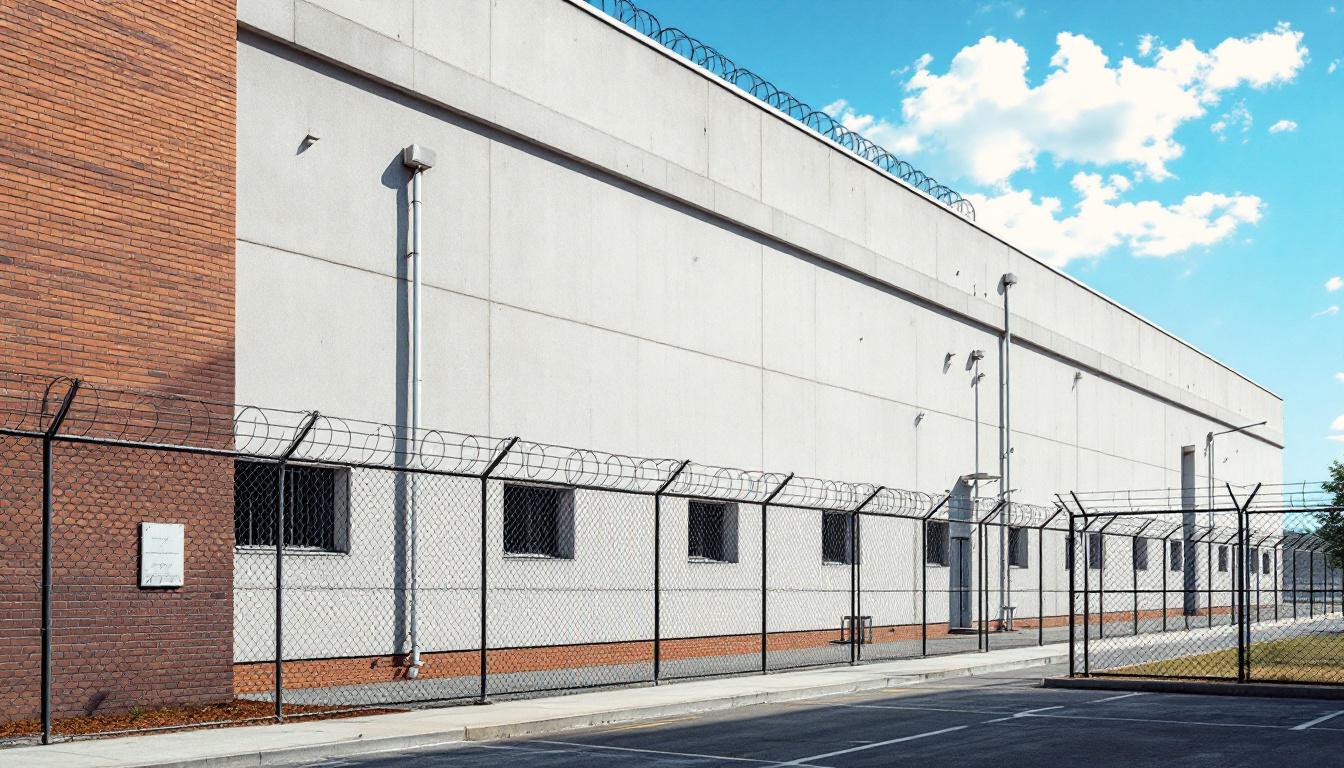
Quick Navigation
How to contact an inmate at San Diego County Jail
This comprehensive guide will walk you through how to connect with an inmate at San Diego County Jail. Follow the steps below to find an inmate and send letters and photos:
- Search for the inmate using our search tool below
- Create your account or log in to Penmate
- Write your message (up to 6,000 characters)
- Send instantly - inmates receive printed copies daily
Find an Inmate
Search for an inmate to start communicating today
Tip: You can search by first name, last name, or inmate ID number
To contact a person at San Diego County Jail start by searching for the person on the official facility website. Perform a search by following these steps:
- Step 1: Enter their first name and last name into the search form and click "Search"
- Step 2: Locate their inmate record
- Step 3: Write down their Inmate ID and any housing information provided
Important! Be sure to enter the person's full name. Nicknames should not be used.
How to Send Messages to Inmates

You can use your phone or computer to send emails, letters, and photos to an inmate. Messages are sent electronically to inmate tablets or kiosks at the facility. If you would like to send a message, start by searching for an inmate at San Diego County Jail.
Sending Photos and Postcards

A great way to send love and support to a loved one at San Diego County Jail is to send photos and postcards. It only takes a few minutes to send photos from your phone and it makes a huge difference. You can also mail postcards with words of support and inspiration, or design your own postcard for special moments like birthdays and holidays.
Important! Be sure not to send any explicit photos or they may not be approved by the facility. You can also use a photo printing app like Penmate to make sure your photos are printed at the correct size (4x6 or 3x5) and are mailed according to the rules and regulations of San Diego County Jail.
Frequently asked questions about San Diego County Jail
-
How long does it take to deliver a message?
If you're sending an email message your letter is usually delivered within 24-48 hours. For messages sent via mail you should expect delivery within 3-7 days. All messages will need be approved by San Diego County Jail.
-
How much does it cost to send a message to San Diego County Jail?
You can send a message free using your phone or mail a message via USPS for the price of a $0.60 stamp and envelope. You can also purchase credits or e-stamps from services starting at $1.99.
-
What services can I use to contact an inmate at San Diego County Jail?
Penmate
You can use Penmate to send letters and photos to an inmate from your phone. It's an easy way to stay in touch during your loved one's incarceration. Use the inmate locator to find an inmate's location and contact information, then you can send messages within a few minutes.
Securus messaging
Securus may be another option for communicating with an inmate at San Diego County Jail. You can create a friends and family account and purchase credits to send messages. All messages will be reviewed and must be approved by the facility.
JPay
Some county jails and state prisons may support sending messages with JPay. You must register an account with the system, find your loved one, and purchase stamps to send messages. For some locations you can also attach photos.
Smart Jail Mail
You may also check if Smart Jail Mail is available at San Diego County Jail. Smart Jail Mail is operated by Smart Communications and has contracted with some state and county jails. After purchasing credits, your messages and photos are sent to the facility, printed out, and then handed out to your loved one.
-
What is the mailing address of San Diego County Jail?
Mailing address:
San Diego County Jail
1173 Front St
San Diego, CA 92101
Phone: (619) 610-1647Business hours:
- Monday: Open 24 hours
- Tuesday: Open 24 hours
- Wednesday: Open 24 hours
- Thursday: Open 24 hours
- Friday: Open 24 hours
- Saturday: Open 24 hours
- Sunday: Open 24 hours
-
What are the visiting hours at San Diego County Jail?
Visiting hours at San Diego County Jail vary by housing unit and security level. Generally, visits are scheduled on weekends and holidays, with some facilities offering weekday visits. Contact the facility directly at (619) 610-1647 or check their website for the current visiting schedule. Visits typically last 30-60 minutes and must be scheduled in advance.
-
What items are prohibited when sending mail to San Diego County Jail?
Prohibited items typically include: cash, personal checks, stamps, stickers, glitter, glue, tape, staples, paperclips, polaroid photos, musical or blank greeting cards, hardcover books, magazines with staples, and any items containing metal or electronics. Only send letters on plain white paper with blue or black ink. Photos must be printed on regular photo paper (no Polaroids). Always check with San Diego County Jail for their specific mail policies.
-
How do I send money to an inmate at San Diego County Jail?
You can send money to an inmate at San Diego County Jail through several methods: 1) Online using JPay, Access Corrections, or the facility's approved vendor, 2) Money orders mailed directly to the facility with the inmate's name and ID number, 3) Kiosks located in the facility lobby, or 4) Over the phone using a credit or debit card. Fees vary by method, typically ranging from $2.95 to $11.95 per transaction.
-
Can I schedule a video visit with an inmate at San Diego County Jail?
Many facilities now offer video visitation as an alternative to in-person visits. At San Diego County Jail, video visits may be available through services like Penmate, Securus Video Connect, GTL, or ICSolutions. Video visits typically cost $10-20 for 20-30 minutes and must be scheduled in advance. You'll need a computer or smartphone with a camera and reliable internet connection. Contact the facility for their specific video visitation policies and approved vendors.
-
What identification do I need to visit an inmate at San Diego County Jail?
All visitors must present valid government-issued photo identification such as a driver's license, state ID, passport, or military ID. Minors must be accompanied by a parent or legal guardian who can provide the minor's birth certificate. Some facilities require visitors to be on the inmate's approved visitation list, which may require a background check. Contact San Diego County Jail for specific ID requirements and visitor approval procedures.
-
How can I find out an inmate's release date?
To find an inmate's release date at San Diego County Jail, you can: 1) Use the online inmate search tool if available, 2) Call the facility's records department, 3) Contact the inmate's case manager or counselor, or 4) Have the inmate provide this information during a call or visit. For privacy reasons, some facilities only release this information to immediate family members.
Facility Overview
Official Website

About San Diego County Jail
County jails throughout California's correctional system serve as vital community anchors, balancing public safety with meaningful opportunities for rehabilitation and family connection. The San Diego County Jail operating in Santee exemplifies this dual mission, providing secure housing while maintaining essential links between incarcerated individuals and their loved ones throughout the greater San Diego region.
Within California's broader correctional framework, this CA correctional facility typically focuses on serving individuals awaiting trial, those sentenced to shorter terms, and people transitioning between different phases of the justice process. The facility's location in Santee positions it strategically to serve families across San Diego County, often facilitating visitation and maintaining community ties that research suggests are crucial for successful reintegration. The population services generally include basic medical care, educational opportunities, and programs designed to address underlying issues that may have contributed to criminal behavior.
The jail's approach to operations often emphasizes preparing individuals for their eventual return to the community, recognizing that most people housed in county facilities will rejoin their families and neighborhoods. This community-centered perspective typically influences programming decisions, from substance abuse counseling to job readiness training, helping ensure that time served becomes an opportunity for positive change rather than simply punishment. Such facilities play an essential role in California's justice system by serving as bridges between immediate public safety needs and longer-term community wellbeing.
Programs & Services
Support for the population at San Diego County Jail flows through comprehensive programming designed to address individual needs and strengthen community connections. The facility's approach centers on providing meaningful opportunities that help participants develop essential skills while maintaining family relationships. These programs typically emphasize personal growth and preparation for successful community reintegration.
Educational initiatives may supply basic literacy instruction, GED preparation, and adult education courses that allow participants to advance their academic credentials. Vocational training programs often include instruction in practical trades and job-ready skills that enhance employment prospects upon release. Moreover, these educational and vocational opportunities are designed to build confidence while providing concrete pathways toward economic stability.
Rehabilitation programs typically focus on addressing underlying issues through counseling services and therapeutic interventions. The facility may offer identification document assistance to help participants secure essential paperwork needed for housing and employment applications. Volunteer programs often connect the population with community mentors and support networks, creating bridges that extend beyond incarceration. These support services work together to address both immediate needs and long-term goals, helping participants rebuild their lives and strengthen their connections to family and community.
Daily Life & Visitation
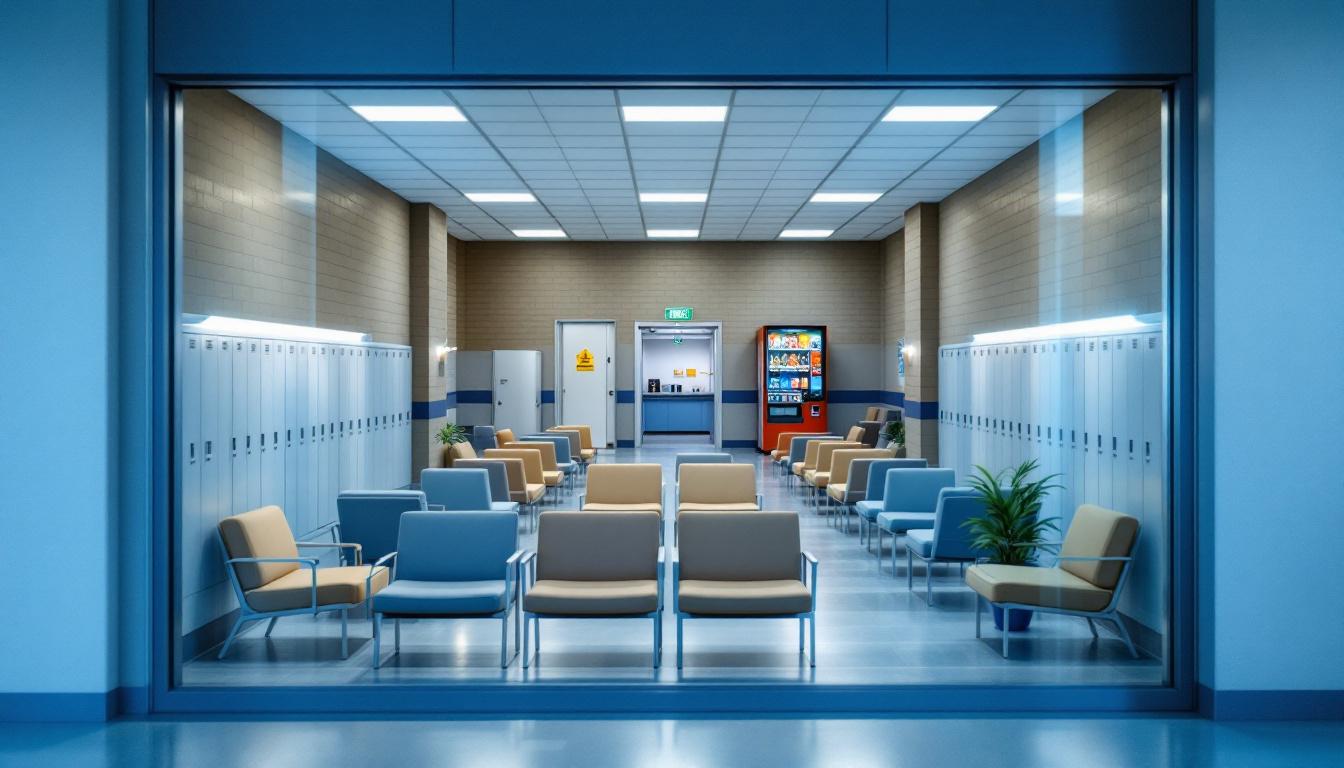
Organizational protocols at the facility actively shape every aspect of the population's daily experience, with structured schedules that typically begin before dawn and continue through evening hours. At present, the population follows established routines that include designated times for meals, programming, recreation, and rest periods. Count procedures occur regularly throughout the day, requiring all individuals to be present and accounted for in their assigned areas. The facility actively maintains order through clear expectations and consistent enforcement of rules that govern movement, behavior, and participation in daily activities.
Housing arrangements generally place the population in dormitory-style units or individual cells, depending on classification levels and available space. Living accommodations typically supply basic necessities including bedding, personal hygiene items, and limited storage for approved personal property. Meals are usually served in designated dining areas or delivered to housing units, with the population receiving three meals daily that meet nutritional standards. Moreover, commissary services allow individuals to purchase additional food items, hygiene products, and other approved goods using funds from their accounts.
Structured programming schedules supply various opportunities for education, vocational training, and personal development throughout the week. Recreation periods typically include access to outdoor areas, television viewing, and reading materials from the facility library. Whereas in-person visitation may have specific scheduling requirements, the population generally maintains family connections through phone calls, video visits, and written correspondence. Work assignments within the facility often include kitchen duties, maintenance tasks, and clerical work, providing structure and potentially reducing sentences through participation credits.
Ready to Connect?
Start communicating with your loved one today
Search for an Inmate
